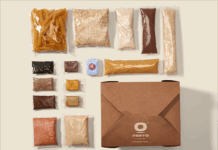
Setting minimum targets for recycled content in food packaging may sound like a good idea, but could lead to overall less efficient use of resources if material types and their applications are not carefully considered, cautions Richard McKinlay, Head of Circular Economy at resource recovery specialist Axion.
It’s widely acknowledged that to make recycling more economically viable, an end market ‘pull-effect’ is needed to create the demand for recycled material. Setting minimum ‘recycled content’ targets is one way of stimulating this demand.
Minimum ‘recycled content’ targets would be a positive step for many products, such as automotive parts, groundworks, piping and, in some cases, packaging. However, this approach could be counter-productive in areas such as polypropylene (PP) food packaging.
The technology and infrastructure is not currently available to produce food grade recycled PP from post-consumer household packaging. As a result, if minimum targets are introduced, in the short term, manufacturers would have to move from PP into polyethylene terephthalate (PET).
However, this presents a key issue with PET in pots, tubs and tray applications. As several WRAP studies have shown, the lower quality of PET recycled from pots, tubs and trays makes it unsuitable for many end-use applications. This means you might substitute a recyclable pack that’s good in every other way, but without recycled content, for a pack that may not be as good for recycling yet has recycled content.
Established markets for recycled PP already exist, such as automotive parts and furniture, and these markets can more easily increase recycled content than in packaging applications.
Although research is being done into sorting material using markers to sort food contact from non-food contact PP packaging, and PET thermoform recycling is progressing; in the short term brands, retailers and converters should be able to continue using PP without recycled content – and not be penalised for doing so.
Furthermore, I feel that given the challenges of including recycled content in flexible packaging, a minimum target would be a retrograde step. Manufacturers would be tempted to move back to rigid materials, such as glass or aluminium, which may impact negatively on the complete product lifecycle, through higher transportation costs for example.
Currently, we are in an interesting position where more effort is being put into developing recycling systems and the use of recycled materials. However, we cannot keep switching material format. It’s important that we do the best we can with current infrastructure based on complete product lifecycle economics.
Food safety is the most crucial aspect of packaging; perhaps we should encourage a circular economy approach where virgin polymer is used in food packaging, which is then recycled into non-food packaging and other long-life products.
It’s all about creative thinking around end applications and not worrying so much about closed-loop recycling. The automotive sector offers a big potential market for flexible PP in new end products, as well as secondary packaging applications, such as plastic delivery envelopes.
In the future, targets will be a great help, but we’re not quite there yet. We must ensure that we don’t take ‘one step forward and two steps back’.














